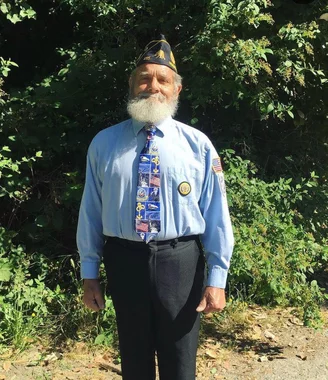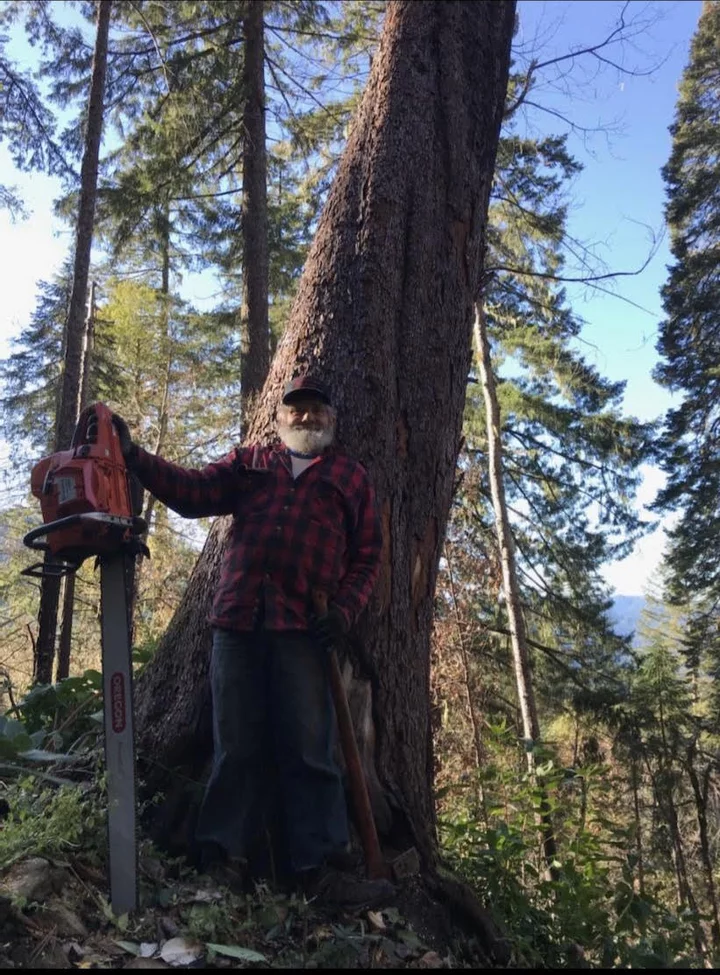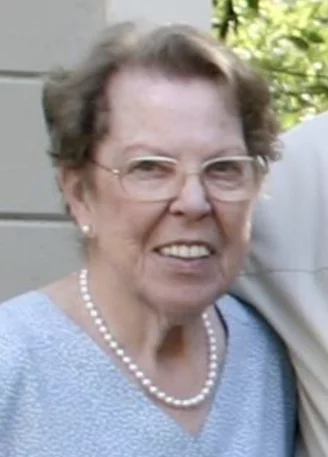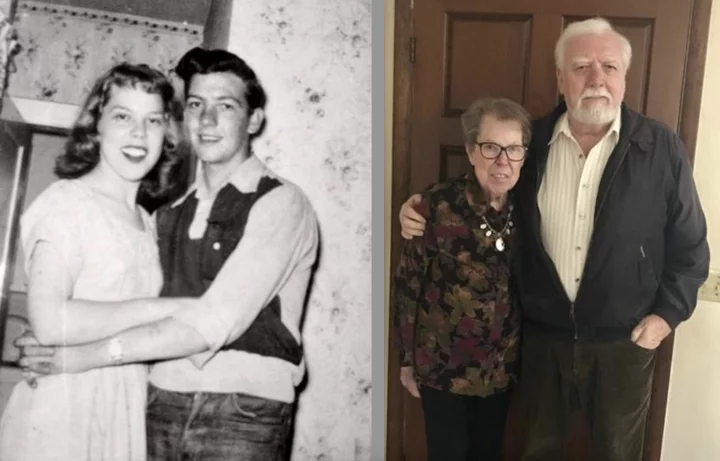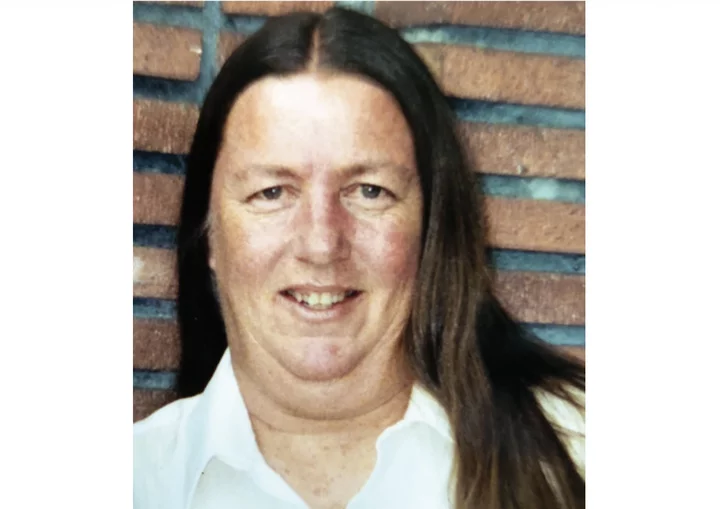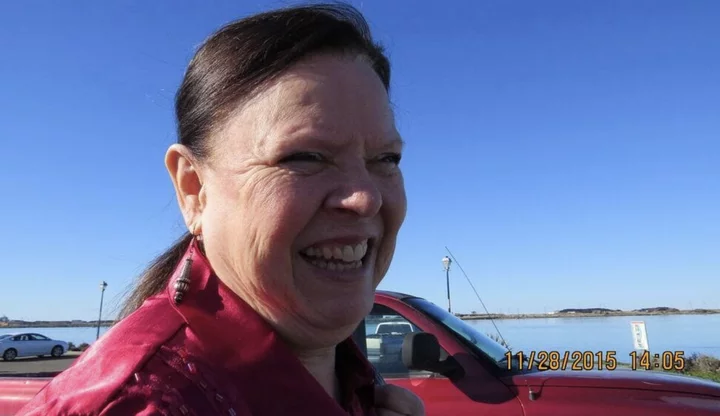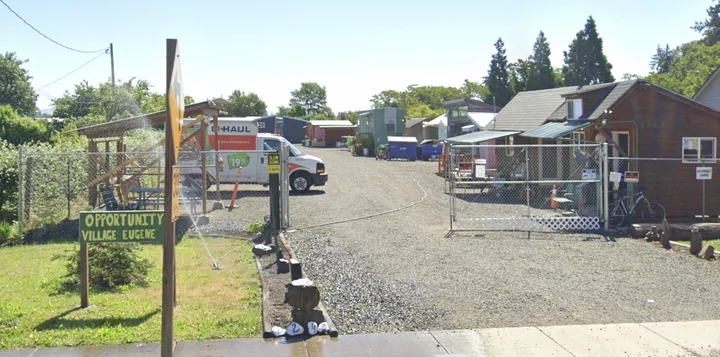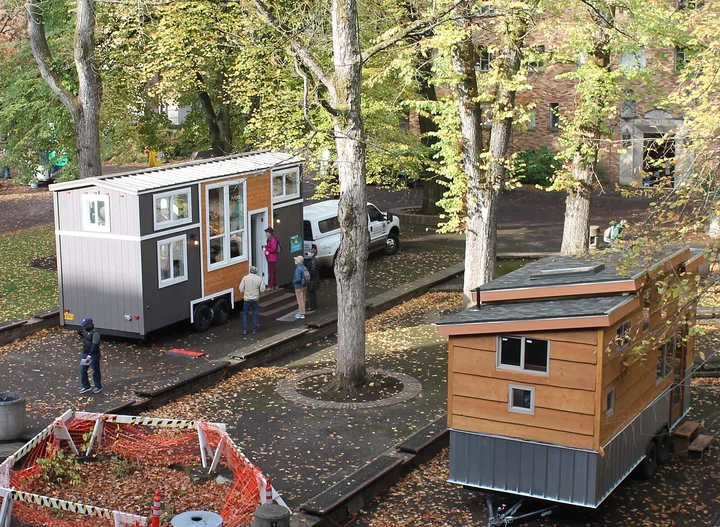OBITUARY: Robert Cogen, 1935-2024
LoCO Staff / Tuesday, July 23, 2024 @ 6:45 a.m. / Obits
It is with great sadness that we announce the passing of Robert Sklar
Cogen, 89, on the morning of May 28, 2024. He died from the effects of the
devastating stroke he suffered many years ago. With great determination,
he fought until the end to regain what he had lost and continued to make
the most of what he had. Robert had a long life of adventuring, creating and
helping others, but the baling wire and duct tape could not hold him
together any longer.
He was many things in his long life: herpetologist, lawyer, artist, kinetic pilot, writer, gourmet, naturalist, overall scientist, poet, scuba diver, tour guide and educator. Robert lived life to the fullest.
For those of us who were family, he leaves a hole that cannot be filled. We honor his memory by living our lives with joy and a spirit of adventure.
Robert is survived by his wife Christine (Curtis), his daughter Amy Berkowitz and her husband Cliff, daughter Karen North, grandsons Alexander Berkowitz, Michael Berkowitz, Brian North, and granddaughter Mallory North. Also sisters-in-law Kimberly Swan, Deborah Schwartz Lipke (Randy), Lindarose Bruce (James), Terri Douglas (Ross), niece Jessica Swan-Purchio (Cameron) and many other nieces and nephews.
Robert was predeceased by his parents Harry and Dena Cogen, his sister Suzanne Cogen and close friends David Walker and Peter Presnell. Our deepest gratitude to Frye’s Care Home, Redwood Coast PACE, and Hospice of Humboldt for their exceptional and thoughtful care; and to his faithful friend, John Porter, who brought so much happiness to Robert at their Monday evening get togethers.
###
The obituary above was submitted on behalf of Robert’s loved ones. The Lost Coast Outpost runs obituaries of Humboldt County residents at no charge. See guidelines here.
BOOKED
Today: 8 felonies, 12 misdemeanors, 0 infractions
JUDGED
Humboldt County Superior Court Calendar: Today
CHP REPORTS
Us101 N / Herrick Ave Onr (HM office): Assist with Construction
255 E Samoa Blvd (HM office): Missing Indigenous
ELSEWHERE
BBC: A look at the key items in Trump’s ‘big, beautiful bill’
AP News: Trump says Israel has agreed on terms for a 60-day ceasefire in Gaza and urges Hamas to accept deal
RHBB: Feather Alert Issued for Missing At-Risk Man Last Seen in Arcata
RHBB: Lightning-Sparked Fires Spread Across North Coast Forests; Crews Responding Across Rugged Terrain
OBITUARY: Walter Cosce, 1946-2024
LoCO Staff / Tuesday, July 23, 2024 @ 6:45 a.m. / Obits
Walter Louis Cosce, Sr., was born on July 19, 1946, in San Francisco, CA, to Italo and Marietta Cosce. He began his journey home on July 13, 2024, six days shy of his 78th birthday.
Walt was a veteran of the US Navy, having served aboard several aircraft carriers during the Vietnam War. He was proud of having served his country and was an active member of American Legion Post 415 in Hoopa.
Walt came to Weitchpec in the late 1960s. Like so many others, he was drawn by the prospect of finding gold. He always said he found his gold in the land and the people here. He often told the story of turning to his buddy and saying, “Wouldn’t you just love to tell people you live in Weitchpec?” He loved it so much that he did it for the rest of his life.
Walt held several occupations in his time, but logging got into his bones. He was in his happy place anytime he had a chainsaw in his hands. When logging jobs became scarce, he turned to cutting firewood, keeping his friends and neighbors warm as well as donating countless cords to fundraisers for local youth. He could recall a wealth of local history, family lore, and off-color jokes. Walt was an avid fisherman, an excellent cook, a master gardener, a great pool player, a pretty fair shade tree mechanic, and the perfect Santa Claus. However, his absolute favorite thing to do was to help people. He was the guy who had the tools, know-how, and willingness to help anyone, anywhere, anytime. Even when he couldn’t fix the problem, you’d walk away smiling because the man would say anything for a laugh. ANYTHING.
Walt is preceded in death by his parents, Italo and Marietta Cosce; his son, Jason Price Sr.; and his grandsons Jason Price Jr. and William Price. He is survived by his sisters, Barbara Mylin (Rich) and Emmy Cosce; brothers Leo Cosce (Joanne) and Albert Cosce (Beverly); his wife, Sunny Cosce; sons Walter (Louie) Cosce Jr., Vito Cosce (Ashley), and Chad “Mugzy” Sanders (Kira); his daughters Lena Cosce (Larry) and Taura Cosce (Tanner); daughter-in-law Sarah Scott (Alex); grandsons Roman Price, Miles Barner, Orion Cosce (Liana), Louis Cosce (Bri), Shawn MacMurray Jr., Italo and Leo Cosce, and Joey Schaeffer; granddaughters Devin, Jaycee, Crystal, and Kaylee Price, Aeriana Cosce, Yvonne Cosce, Julie-sa Harrison-Cosce, Marina Cosce, Felicia and Autumn Arambula (Seth), Uonascha Parker (Damani), Lorita Schaeffer, and Luella Cosce; great-grandchildren Steven Watson, Jase Price-Lewis, Domanik and Vienna Cosce, and Tia Cosce; as well as numerous nieces and nephews. He also leaves behind the Crayton family, Chris Hoyas, Kim Conrad, Windy Thornton and family, and too many other special friends to mention, all of whom he considered family.
A celebration of life for Walt will be held on August 3 at 12:00 p.m. at the Libby Nix Community Center in Weitchpec. Please bring a potluck dish and your favorite Walt Cosce stories to share.
Happy trails, Doc…until we meet again, “Peace, love, and all that hippie shit.”
###
The obituary above was submitted on behalf of Walt’s loved ones. The Lost Coast Outpost runs obituaries of Humboldt County residents at no charge. See guidelines here.
OBITUARY: Mary Kempton, 1932-2024
LoCO Staff / Tuesday, July 23, 2024 @ 6:45 a.m. / Obits
Mary Bell (Sivils) Kempton, aged 91, passed away on May 9, 2024, in Eureka, CA, surrounded by her loving family. Born on June 10, 1932, in Sasakwa, Oklahoma, Mary was the cherished daughter of William and Willa Sivils. At the age of 2, she moved with her family to Arlington, Kansas, where she was raised and later graduated from Arlington High School in 1950.
Mary was known for her radiant smile and the warmth she brought into every room. A devoted wife, mother, grandmother, great-grandmother, and sister, Mary placed her family at the center of her life, loving them deeply and unconditionally. She was the matriarch and the steady rock that everyone relied on. Her culinary skills were a major part of family gatherings, with her handwritten recipes and the cherished cookbook from her high school graduation being prized family possessions. Though many have tried, no one could replicate her dishes quite like she could.
Mary was the only one among her seven siblings to venture far from the Midwest, yet maintained close bonds with them despite the distance. Her life with her husband, Fred Kempton, whom she was married to for 71 years, was filled with love and shared adventures, including numerous road trips with her siblings and memorable annual summer trips to Kansas.
Mary is survived by her loving husband, Fred Kempton; her children, William Kempton (Tina), Susan Johnson (Leonard), and Amy Kempton; grandchildren, Treggan Mullenix (Betty), Laura Sarvinski (Travis), Neil Johnson, Jason Schoenmehl, and Tiffany Chappelle, (Luke) ; great-grandchildren William and Shawn Chappelle, Olivia and Jett Sarvinski, and Luka Mullenix; her brother Kenneth Sivils; and many nieces and nephews.
Mary was preceded in death by her parents, William and Willa Sivils; her daughter, Laura Chappelle; her grandson, Matthew Chappelle; and her siblings, Wilena Lander, Donna Kaufman, Lois Guthrie, Cleo Oliphant, and Arnold Sivils.
Mary’s life was a beautiful testament to the power of love and family, and she will be profoundly missed by all who knew her.
###
The obituary above was submitted on behalf of Mary’s loved ones. The Lost Coast Outpost runs obituaries of Humboldt County residents at no charge. See guidelines here.
OBITUARY: Carol Colby, 1960-2024
LoCO Staff / Tuesday, July 23, 2024 @ 6:45 a.m. / Obits
Carol Beth Colby was born on August 4, 1960, in Oxnard, California, to Gerald Arley Colby and Sylvia Lorraine Colby. She passed away on April 25, 2024.
Carol spent her early childhood in Oxnard, California, and moved to Eureka, CA, in 1972 with her mother, father, and three sisters. It was in Eureka where Carol developed a love for golf, just like her father, Jerry Colby. She frequented Eureka Municipal Golf Course and occasionally played at Baywood Golf and Country Club. Carol enjoyed the camaraderie of many golfing friends, especially the ladies’ golf group, including her favorite golf partner, Donna Hunter.
Carol worked for many years in the automotive industry, including mechanics and wholesale warehouse services in Eureka, with her last job at Napa Automotive Parts in downtown Eureka. She attended Eureka High School and was also a member of the United States Air Force.
Carol was blessed with the birth of her son, Jerry Lee Colby (Kitsu), and raised her family in Eureka. She was especially proud of her son’s recently opened business, “Sparky Fox Arcade,” at the Bayshore Mall. She would tell anyone who would listen how proud she was of Kitsu’s accomplishment.
Carol is survived by her son Kitsu Colby and Damien King, and her sisters Lynn Niekrasz (husband Michael) and Ann Colby. She is also survived by her niece Rachel Rudd and nephews Jason Garza, Christopher Garza, Josh Mann, Keith Mann, and Jesse Alora. Carol was preceded in death by her parents, Jerry Colby and Sylvia Scott, and her elder sister Jeri Garza. Also beloved son-in-law Alex Hanover.
A “Celebration of Life” will be held on Carol’s birthday, August 4th, from 1-3 pm at Synapsis performance space, 1675 Union St., Eureka.
###
The obituary above was submitted on behalf of Carol’s loved ones. The Lost Coast Outpost runs obituaries of Humboldt County residents at no charge. See guidelines here.
OBITUARY: Karen Agee, 1954-2024
LoCO Staff / Tuesday, July 23, 2024 @ 6:45 a.m. / Obits
Karen Darlene Agee (Hubbard) was born on April 17, 1954, and reached heaven on March 27, 2024, just before her 70th birthday. She was born in Eureka to Dale and Lotus Hubbard. She moved around California with Pac-Bell, then AT&T, until she resided in Modesto, CA. She and her husband, Mel, lived there until he retired. Once he retired, he wanted to move out of state, but Karen insisted on living close to family. For the last years of her life, she lived next to her youngest son, Ryan Carns, and his wife, Joleta, in Brownsville, California.
Karen had lost both her parents in the last seven years. Her oldest son, Scott A. Carns, and his wife, Samanthia, helped take care of them as they declined and ascended to heaven. He spoke with his mom daily until her dementia started, making it harder and harder to get a hold of her with all the family and work responsibilities depending on him. It was hard for him to visit her as often as he wanted.
At the age of 16, Karen gave birth to her oldest son, Scott, while still in high school. She graduated from Eureka High School in 1972 with her son in her arms. Karen was a kind woman who cared deeply for family. She was also a savior for abandoned and abused animals and loved riding horses. If you could visualize her heart, it was bigger than she was. An amazing wife, mother, grandmother, sister, daughter, aunt, cousin, friend, and great-grandmother, she was always smiling and loved to have fun. She enjoyed life to the fullest and was a believer.
She is preceded in death by her parents, Dale and Lotus Hubbard of Eureka, and her nephew, Neil Bryan Hubbard Jr.
Karen is survived by her husband, Melvin Agee, of Brownsville, CA; son Scott A. Carns and his wife, Samanthia, of Eureka; son Ryan Carns and his wife, Joleta, of Brownsville; grandchildren Brittani Carns and her husband, Jason Tunzi, Kevin Carns and his wife, Ashlee, Daniol Carns and his girlfriend, Nicole Basham, Riley Carns, and Jenna Carns; great-grandchildren Owen and Ayden Croan, Alivia, Ava, Eli, Lannan, Troy, Brinley Carns, Brantley and Jaxson Chambers, and baby Ace Tunzi due soon; stepson Sean and his wife, Nikki, and their children Parker and McKenzie; stepdaughter Annette and her husband, Clinton, and their children Oliver, Colleen, and Benjamin; brothers Neil Hubbard and his wife, Tina, Jack Hubbard and his wife, Leslie, and Skip Hubbard and his wife, Jan; and numerous cousins, nieces, and nephews.
We would love for anyone who knew her to join us in a celebration of her life at the Wharfinger Building on August 16th at 1:00 pm. Please bring finger food. We hope to find peace and allow all who cared about her to remember her for the loving and amazing woman she was.
In lieu of flowers, please donate to the Walk to End Alzheimer’s & Dementia.
RSVP to Samanthia Carns at samcarns72@gmail.com.
###
The obituary above was submitted on behalf of Karen’s loved ones. The Lost Coast Outpost runs obituaries of Humboldt County residents at no charge. See guidelines here.
Hoopa Man, 25, Dies After Being Struck By Driver of Kia Soul on State Route 96
LoCO Staff / Monday, July 22, 2024 @ 3:48 p.m. / Traffic
Press release from the California Highway Patrol:
On July 19, 2024, at approximately 11:40 PM, the CHP Humboldt Communication Center (HCC) received a call of a vehicle versus pedestrian traffic crash on SR-96, west of Shoemaker Road.
Based on CHP’s preliminary investigation, it appears this crash occurred when 25-year-old Joseph McCovey stepped into the westbound lane of SR-96 directly into the path of a 2015 Kia Soul driven by 18-year-old Neo McKindley. As a result of this action, Mr. McCovey was struck by the 2015 Kia Soul which subsequently left the scene of the crash.
Law enforcement and emergency medical personnel responded to the scene and rendered aid to Mr. McCovey. However, despite their efforts, Mr. McCovey succumbed to his injuries and was pronounced deceased by Hoopa Ambulance personnel.
Shortly after midnight, Mr. McKindley and his passenger, 19-year-old Dawnalee Rangel, arrived at the Hoopa Valley Tribal Police Station to report their involvement in this crash to law enforcement. Both Mr. McKindley and Ms. Rangel cooperated fully with CHP and were released pending further investigation. Whether drug and/or alcohol impairment contributed to this crash continues to be investigated.
The CHP continues to investigate this crash and asks anyone with information to contact the Humboldt Area CHP at (707) 822-5981 during business hours, or (707) 268-2000 after business hours.
The California Highway Patrol extends its condolences to the family of the deceased and would like to thank all responding agencies for their response and assistance with this investigation.
Humboldt Planning Commission Approves Tiny House and Emergency Housing Village Ordinances
Gillen Tener Martin / Monday, July 22, 2024 @ 1:15 p.m. / Local Government
The Opportunity Village in Eugene, Ore. | Image via Google Earth.
###
On Thursday, the Humboldt County Planning Commission passed a pair of ordinances designed to address the county’s affordable housing needs – the Tiny House Village Ordinance and the Emergency Housing Village Ordinance – moving the policy documents on to the Board of Supervisors for final approval.
Both ordinances, which have been in the works for nearly two years, seek to alter current Humboldt County zoning regulations, which do not allow for multiple small residential units on a single property. Development of the proposed policies was funded by a California Department of Housing & Community Development planning grant aimed at increasing low-income housing in the state, and the close of the funding window is fast-approaching.
The commissioners’ conversations on Thursday night underscored the age-old balancing act in affordable housing development: keeping barriers to development as low as possible while providing the highest quality of living to village community residents.
Presented by Associate Planner Megan Acevedo, changes made to the draft Tiny House Village Ordinance fell into five categories: density of tiny houses per acre, zones in which tiny houses would be principally permitted (meaning that the villages would be made an allowable use in that land use designation, allowing for minimal red tape in development), the number of household pets allowable in each unit, parking requirements and development standards for common kitchens.
Setting standards for nuanced aspects of tiny house villages that consider community needs down to minutiae like food storage has placed the county in largely unexplored local government territory, according to Acevedo.
“In my research I have not found any tiny house village ordinances; we are the first county to do this,” she said.
The first proposed change from prior drafts concerned density, which the commissioners had recommended increasing from 20 to 30 units per acre in non-residential areas at their June 27 meeting. The change was reaffirmed in Thursday’s meeting as a way to increase affordability for village residents as the entities operating communities shoulder tax, insurance, utilities and management costs.
“It’s just impossible to survive with only 20 [units] and keep the rent down,” Fifth District Commissioner Peggy O’Neill said, adding that she wants the units to be accessible to elders surviving on social security, students and disabled community members, among others.
Density standards for tiny house villages in residential areas will be kept consistent with communities’ general plans.
On the second category of changes discussed, the zones in which tiny house villages would be principally permitted, O’Neill pointed out that the parcels identified – approximately 922 of them, according to Acevedo’s presentation – fell primarily in the county’s developed coastal areas rather than Humboldt’s rural reaches.
“Having worked for the majority of my career for people who don’t live in areas that have all of this [development], they still need housing,” she said. “They’re still living in bushes and in cars, and this would be a step up from homelessness … . They don’t want to move to Eureka or McKinleyville to get that housing. They want to stay in their community.”
Planning Director John Ford responded that the ordinance prioritizes sites that have adequate access to utilities, public transportation and services. (Around 718 of the 922 eligible parcels are within a half-mile of a transit stop).
“I totally understand wanting to take people out of the bushes and put them into housing. We absolutely want to do that, but we also want to do it in a way that’s true to the purpose of the different districts,” he said, noting that sites in Humboldt’s rural regions often fall into resource lands designations, such as timberland.
“’While I generally support your sentiment, I could not be supportive of adding resource lands to the zoning,” At-Large Commissioner Lorna McFarlane chimed in.
The debate was ultimately put to bed by Chair Thomas Mulder’s point that including resource lands in the zoning may trigger additional California Environmental Quality Act (CEQA) analysis, which could lead to delays that affect the ordinance’s funding. (The County is currently seeking a CEQA exemption for the project).
Another concern voiced in the zoning portion of the discussion was the identification of Industrial Commercial (C-3) zones as areas principally permitted for villages.
“I’m concerned from a health and safety standpoint,” First District Commissioner Iver Skavdal said, noting the prevalence of noise and heavy trucking in industrial areas. At-Large Commissioner Sarah West countered that Humboldt is rife with “a tremendous amount” of underutilized industrial land. The commission settled on moving Industrial Commercial zones into conditionally (rather than principally) permitted use.
The point on pets – a quick discussion, commissioners agreed that two household pets (defined as cats or dogs) in each unit is acceptable – led into the longest portion of the meeting: parking requirements.
As proposed, the draft ordinance required one parking space per unit, with additional reduction options available for projects that have on-street parking or bike facilities (5% reduction for providing bike racks, 10% for fenced bike racks and 25% for providing bike lockers or racks within an enclosed secure space). Twenty-five percent reductions would also be available for projects within half a mile of a public transit stop.
In her presentation, Acevedo said that the options could be “stacked” to allow up to a 50% reduction in required parking – lowering development costs.
The commissioners’ wide-ranging parking discussion hit on many transport-related considerations, from how breachable bike lockers actually are to parking impacts for the neighbors and businesses that will surround tiny house communities.
“One of the core struggles I’m having with this ordinance in general is that there are a lot of situations … where you could have five houses on a rural property, living in a communal fashion in a very rural area,” West said. “But at the same time, we’re also talking about addressing housing needs in a much larger way and enabling much denser developments … all in one swoop. And how do we meet all the needs all the way around?” she asked, summing up the struggle of creating a catch-all ordinance for a vast county with living styles ranging from semi-urban to very rural.
“I feel like we’re not quite getting there on either end, and maybe that’s the best we can do,” she concluded.
In the end, all seven commissioners agreed to scratch the 5% reduction for unsecured bike racks, add a requirement for “some version of a secure bike locker” per every two units and lower the parking requirement to one space per unit for projects within a half-mile of a transit stop.
The final meaty discussion regarding changes to the Tiny House Village Ordinance was on common kitchens, an area of regulation in which no state or California Building Code requirements exist to guide or provide examples for the ordinances, as Acevedo noted. Kitchen situations as outlined in the ordinances vary by tiny house community type: the drafts envision both common kitchen situations, where residents are cooking for themselves, as well as service kitchens providing cafeteria-style dining for residents.
The Commission’s kitchens talk centered on requirements for common kitchens, and carried through the theme of the night: keeping costs as low as possible for developers while ensuring that residents have what they need to live comfortably.
Considering that some people cook more or less than others, and not every resident will eat at the same time, the Commission settled on a requirement that each common kitchen should have the equivalent of a residential kitchen (loosely defined, but including a four burner stove) per every eight units.
Tiny homes on display in Portland, Ore. | Photo by Dan David Cook, CC BY-SA 4.0.
Emergency Housing Village Ordinance
With those changes hammered out, the Commission unanimously moved to approve the Tiny House Village Ordinance as amended, and the discussion transitioned to the Emergency Housing Village Ordinance.
Unlike communities in the Tiny House Village Ordinance – which are geared toward more long-term residency, may include ownership opportunities and seek to add diverse affordable housing opportunities to the county’s stock (including some market-rate units) – the Emergency Housing Village Ordinance is intended to aid persons experiencing homelessness by relaxing building standards for Emergency Dependent Unit Villages and Alternative Lodge Parks under the County’s 2022 Shelter Crisis Declaration.
Director Ford made clear that the Emergency Housing Village Ordinance governs “hard structures” only, and that sheltering in vehicles or in tents on approved sites will continue to fall under the County’s Safe Parking-Safe Shelter Pilot Program.
The Commission had one change to consider on the Emergency Housing Village Ordinance: whether or not to principally permit Emergency Dependent Unit Villages in Industrial Commercial (C-3) and Highway Service Commercial (CH) areas.
“These are uses that would probably generate a little bit of public comment,” Director Ford said, explaining the thinking that looking to “areas that have less concerned neighbors” would allow more projects to come to fruition.
Commissioners reiterated concerns with quality of living in industrial areas but agreed that wherever an emergency housing village is placed, it will likely be safer than where residents are currently living unhoused.
“I think we should use the available land,” Commissioner McFarlane said.
The Commission ultimately moved to add Industrial Commercial and Highway Service Commercial to the zones that Emergency Dependent Unit Villages are principally permitted in (which also include Residential Multiple Family [R-3], Apartment Professional [R-4], Mixed Use Urban [MU-1], Neighborhood Commercial [C-1] and Community Commercial [C-2]).
Commissioner O’Neill also brought up whether or not the ordinance should include parking for on-site service staff, but the majority of commissioners decided against mandated parking to maintain the “spirit of as few requirements as possible” (in Mulder’s words).
“I would leave it at the discretion of the person who is operating the village to know … what they need to operate and not unintentionally limit them on what they can do on the site with parking requirements,” Commissioner West said.
“This is an emergency housing village and less is more here,” Commissioner Skavdal agreed. “I would not add the parking requirement.”
District Four Commissioner Jerome Qiriazi then opened a discussion around potential air quality issues that generators could create in emergency housing villages.
“We may have an emergency shelter in place for many years,” he said.
Commissioners discussed limiting the number of generators running on each site, but ultimately decided to stick with the language as written, which already requires a special permit for generator use.
The Commission also decided to narrow the sites available for emergency village development to those within fire districts, in response to a concern raised by Commissioner Skavdal regarding emergency service access. As the majority of the 699 parcels identified for emergency villages are already in fire districts, Director Ford called the proposal an “easy add.”
Closing discussion on the Emergency Housing Village Ordinance, Commissioners directed staff to extend the period of disassembly for emergency villages from 90 to 180 days in the case that the Shelter Crisis Declaration is no longer effective to provide residents adequate time to figure out next steps.
The Commission unanimously recommended approval of the Emergency Housing Village Ordinance as amended, and directed staff to explore modifying the Building Code to allow for use of more alternative structures (including tents and yurts) in Alternative Lodge Parks.
“This is the policy, this is the framework by which we’re doing things, but I hope this is not where the County stops in building resources and providing information and really supporting organizations doing this in our community,” Commissioner West said before the vote. “I think this is one of the biggest challenges that we face as a county and I hope that we throw as many resources as possible at it.”
Director Ford said that September remains the goal date to have the Tiny House Village Ordinance and the Emergency Housing Village Ordinance passed by the Board of Supervisors.
As the meeting was over the three hour mark, the Commission continued discussion of the Draft Commercial Residential Ordinance – which allows for residential development in zones where office, parking, or retail uses are permitted – on to its August 1 meeting.
An Opportunity Village plan on display in Eugene, Ore. | Image via the City of Eugene.


